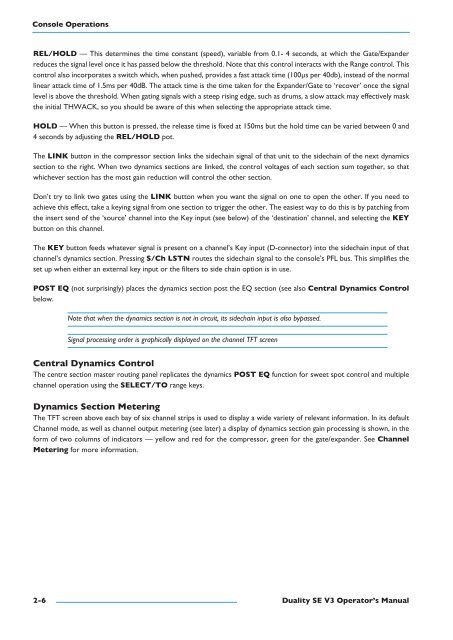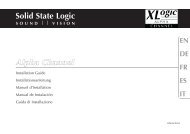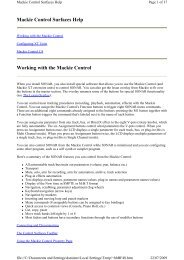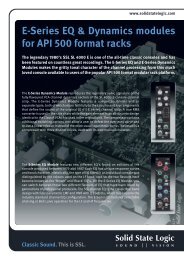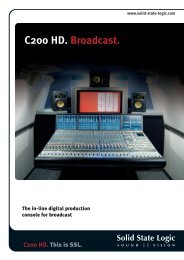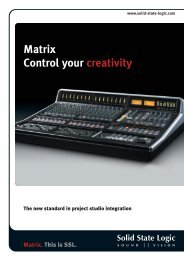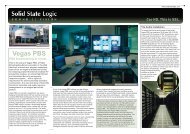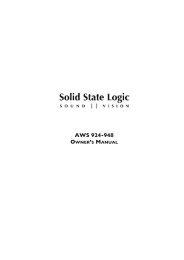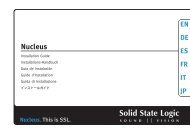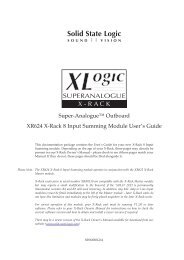Duality SE Operator's Manual - Solid State Logic
Duality SE Operator's Manual - Solid State Logic
Duality SE Operator's Manual - Solid State Logic
You also want an ePaper? Increase the reach of your titles
YUMPU automatically turns print PDFs into web optimized ePapers that Google loves.
Console Operationsrel/HOlD — This determines the time constant (speed), variable from 0.1- 4 seconds, at which the Gate/Expanderreduces the signal level once it has passed below the threshold. Note that this control interacts with the Range control. Thiscontrol also incorporates a switch which, when pushed, provides a fast attack time (100µs per 40db), instead of the normallinear attack time of 1.5ms per 40dB. The attack time is the time taken for the Expander/Gate to ‘recover’ once the signallevel is above the threshold. When gating signals with a steep rising edge, such as drums, a slow attack may effectively maskthe initial THWACK, so you should be aware of this when selecting the appropriate attack time.HOlD — When this button is pressed, the release time is fixed at 150ms but the hold time can be varied between 0 and4 seconds by adjusting the rel/HOlD pot.The lInK button in the compressor section links the sidechain signal of that unit to the sidechain of the next dynamicssection to the right. When two dynamics sections are linked, the control voltages of each section sum together, so thatwhichever section has the most gain reduction will control the other section.Don’t try to link two gates using the lInK button when you want the signal on one to open the other. If you need toachieve this effect, take a keying signal from one section to trigger the other. The easiest way to do this is by patching fromthe insert send of the ‘source’ channel into the Key input (see below) of the ‘destination’ channel, and selecting the KeYbutton on this channel.The KeY button feeds whatever signal is present on a channel’s Key input (D-connector) into the sidechain input of thatchannel’s dynamics section. Pressing s/Ch lstn routes the sidechain signal to the console’s PFL bus. This simplifies theset up when either an external key input or the filters to side chain option is in use.pOst eQ (not surprisingly) places the dynamics section post the EQ section (see also Central Dynamics Controlbelow.Note that when the dynamics section is not in circuit, its sidechain input is also bypassed.Signal processing order is graphically displayed on the channel TFT screenCentral Dynamics ControlThe centre section master routing panel replicates the dynamics pOst eQ function for sweet spot control and multiplechannel operation using the seleCt/tO range keys.Dynamics section MeteringThe TFT screen above each bay of six channel strips is used to display a wide variety of relevant information. In its defaultChannel mode, as well as channel output metering (see later) a display of dynamics section gain processing is shown, in theform of two columns of indicators — yellow and red for the compressor, green for the gate/expander. See ChannelMetering for more information.2-6 <strong>Duality</strong> se V3 Operator’s <strong>Manual</strong>


